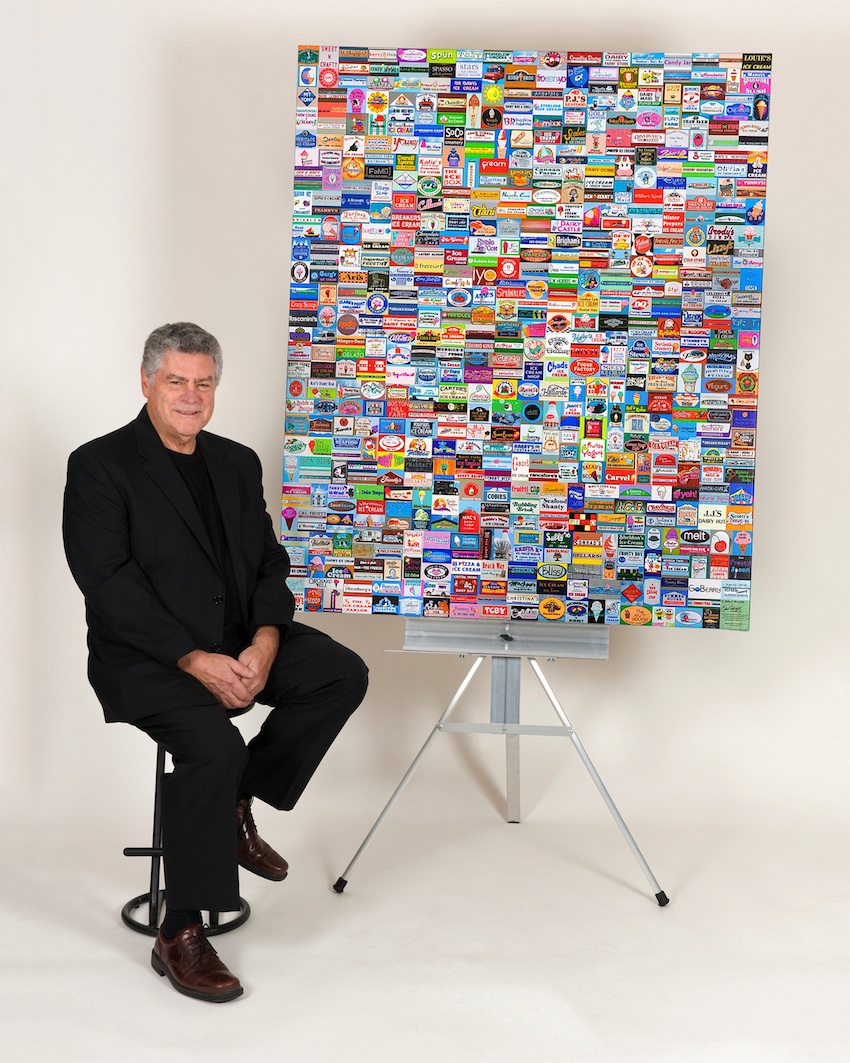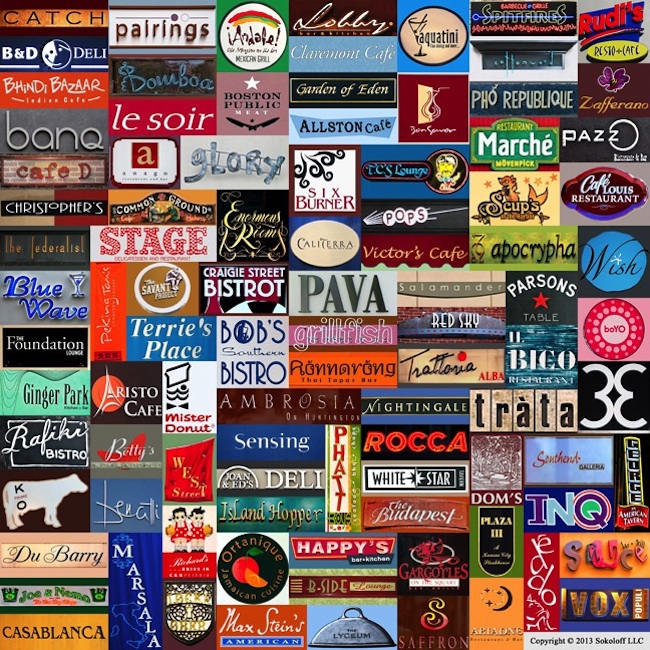A Taste of Massachusetts
Newton resident Ed Sokoloff only gets around five hours of sleep every night.
At 71-years-old, some people might think that’s not enough, but Sokoloff is driven by his passion for photography, and what he calls “marrying” the history of Boston—and Massachusetts—with his art, spending almost 19-hours per day on his projects.
“I am working harder now than I ever have in my life,” he says.
Sokoloff’s talent behind a lens is refined to a specific series of portraits, ones he says are unlike any others out there: He has spent the last 13 years creating massive collages of nearly every restaurant in Boston, as well as every ice cream parlor in the state, and eateries on Martha’s Vineyard and Nantucket, each offering their own nostalgic snapshot of sections of Massachusetts.
And it doesn’t stop there. It never does.
“It’s endless,” says Sokoloff, referring to his searches for old signs and new places, when trying to complete a collection.
Sokoloff recently capped off his ice cream project, which has been in the works for years, and donated the collage to Boston Children’s Hospital, so young patients could see all of the different logos from around the area. “I hate to tell you how many hundreds, and hundreds, and hundreds of miles I drove [to get them all].”
But it was worth it. “Ice cream is done for now. It feels wonderful to finish. You can’t imagine.”
The idea to sacrifice his personal time collecting all of the iconic photos of restaurants and parlors first started 13 years ago, when Sokoloff lived by himself in downtown Boston.
The now-retired lawyer would go out daily and eat at a variety of local places, and then simply take a picture of the restaurant sign where he had food. “Living in Copley, I began eating dinner out on most nights, because I was separated and single at the time. I would go out to eat almost every night. I started taking pictures of the fronts of the restaurants that I ate at, and it evolved from there. I eventually glued together a collage of the places I ate, and put them in a frame and hung it on the wall in my apartment,” he says.
The process kept expanding, starting with restaurants that he called “favorites,” but then as more photos were added to the collection, Sokoloff was forced to build a larger frame to hold them. “I said after awhile, ‘this is getting so big that maybe there is something in here more than for my personal wall.’”
The greater Boston montage he ended up creating consists of three panels, with more than 3,000 places represented, of which more than 500 have closed or undergone name changes, he says.
After amassing photos of downtown food spots, feeling satisfied with the outcome—and once he got remarried a year after starting the first collage—Sokoloff decided to take on a new project collecting pictures of signs strictly from the North End. “That turned into 140 restaurants. I’m just putting the pictures together now, after 12 years of taking photos,” he says.
While gathering signs from other parts of Boston came with relative ease, Sokoloff says he has been haunted by at least one sign from the North End, from a restaurant that closed decades ago, that he couldn’t seem to locate. Over time, his projects transcended from just eating at places and taking photos, and crossed over into what he calls gathering “historic art,” which included adding in eateries that no longer exist.
He says he has stopped trying to locate that particular sign—which belonged to Stella’s— after reaching out to the Historic Society, searching for the owners, and contacting his “sources,” however.
“I’ve given up. I have tried in every way I can. It doesn’t exist. And I won’t take something from a newspaper or magazine,” he says of his strict rules for making one of his collage projects. “If I went into the archives of a library, I wouldn’t take it, it’s not an original source. I have tried, but unfortunately I couldn’t find anything.”
Like all of his projects, at some point it was time to move on to the next one; this time, in the form of dairy treats. Sokoloff says in order to track down each ice cream parlor and shop in Massachusetts, he had to look beyond Google searches, and in some cases resort to taking trips through cities and towns, hoping someone would direct him to a spot, or perhaps he would stumble upon one on his own.
The ice cream montage grew out of the greater Boston project, and started as he passed between restaurants. There were so many ice cream places, though, he had to create a separate category, and expand it to all of Massachusetts.
“I just drove and drove and drove. Sometimes I would drive 20 or more miles to get to a point, and then a place wouldn’t be there, but I would spot a place or two I didn’t have on his list on the way back. The process was a game,” he says. “There is more than 300 cities and towns in Massachusetts; I have been everywhere.”
But it was always just “snap and go,” he says, leaving him little time at an ice cream shop, and not always getting a chance to sample the product. “It seems like everyday there is another place opening up.”
Before he even finished the collage, Sokoloff decided that he wanted to give a copy of it away, and he knew immediately that he would ship one to Boston Children’s Hospital. He also donated copies to Hebrew SeniorLife, the Roslindale rehabilitation center and its NewBridge campus in Dedham.
Sokoloff has made similar signs of restaurants on Nantucket, and Martha’s Vineyard, and donated those to hospitals on the islands as well. “The hope is that memories of the places shown and happy times there not only add to the healing process of the patients and residents, but also brighten each day when viewed by visitors and staff.”
Calling his projects “a hobby,” and dismissing an inclination that he is a professional photographer, Sokoloff says he has a keen eye for photos, but for him, it’s all about the final project and the joy that it brings someone when looking at a particular photo—or in his case, collage. “It’s exciting. It really is so exciting when you see the final product, and it’s so exciting when you see someone that looks at the product and says ‘wow,” he says.




